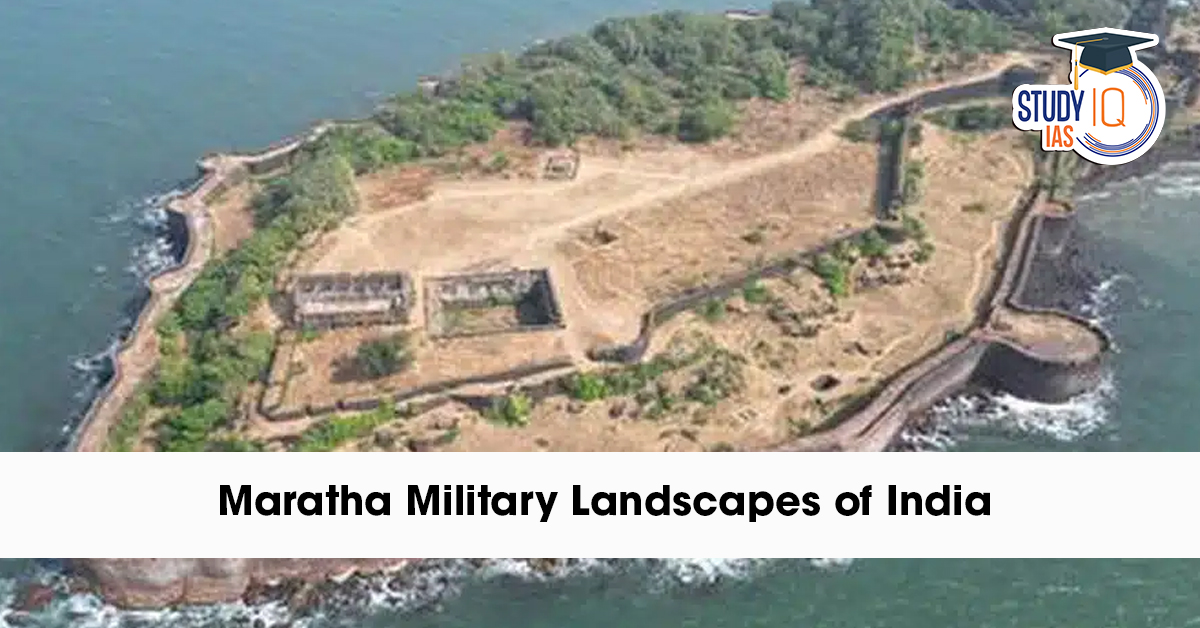Table of Contents
Context: ‘Maratha Military Landscapes of India’ was added to the UNESCO World Heritage List, making it the 44th site in India to receive this prestigious recognition.
About Maratha Military Landscapes of India
- The Maratha Military Landscapes of India, spanning from the 17th to 19th centuries CE, showcase the military strategy and architectural brilliance of the Maratha Empire.
- The network comprises 12 forts located across Maharashtra and Tamil Nadu.
- In 2025, India added these sites to its list of UNESCO World Heritage Sites, its 44th listing on the prestigious list.
Fort Types Based on Terrain
- Hill Forts: Salher, Shivneri, Lohgad, Raigad, Rajgad, Gingee (It is in Tamil Nadu).
- Hill-Forest Fort: Pratapgad (surrounded by dense forests)
- Hill-Plateau Fort: Panhala (situated on a plateaued hill)
- Coastal Fort: Vijaydurg (located along the shoreline)
- Island Forts: Khanderi, Suvarnadurg, Sindhudurg (surrounded by sea)
Historical Significance: These forts symbolise Maratha resistance against the Mughals, followed by the British Empire, illustrating guerrilla warfare strategies, decentralised fortification, and a deep association with the environment.
Main Features
- Geography-Based Design: The forts are situated over the Sahyadri (Western Ghats) and other landscapes, merging into the natural terrain to optimise defence.
- Minimalist Yet Strategic Architecture: The Marathas employed locally procurable materials and prioritised terrain advantage over extravagant palaces or ornamental buildings.
- Self-Sustaining Systems: Every fort included water harvesting systems, food storage, and military garrisons to survive extended sieges.
List of Forts Included
Some of the most important forts in this heritage cluster are:
- Raigad Fort – Shivaji Maharaj‘s capital
- Rajgad Fort
- Torna Fort
- Sinhagad Fort
- Lingana Fort
- Pratapgad Fort
- Khanderi Fort (off the coast near Mumbai)
- Salher Fort (Nashik)
- Ankai-Tankai Forts
- Lohagad Fort
- Sajjangad Fort
- Gingee Fort – in Tamil Nadu, evidence of Maratha expansion
UNESCO Recognition
UNESCO identified the site as meeting criteria (ii) and (iv) due to its exceptional demonstration of:
- Cultural transmission in military strategy and land use
- Development of fort-construction traditions appropriate for the Deccan Plateau


 Poompuhar Port: Ancient Sangam-Era Marit...
Poompuhar Port: Ancient Sangam-Era Marit...
 UNESCO World Heritage Sites of India Lis...
UNESCO World Heritage Sites of India Lis...
 Moran Community of Assam, History, Langu...
Moran Community of Assam, History, Langu...

























